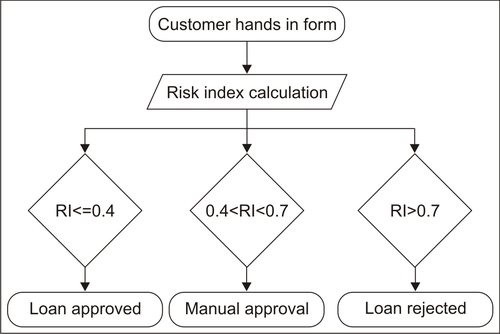Most business processes have a simple logic in the form of decisions: branch points that follow a condition predicate. The Conditions construct in OSWorkflow serves as a branch point for workflows with conditional results.
Remember that Conditions can be BeanShell scripts or Java classes implementing com.opensymphony.workflow.Condition.
In this chapter we'll use an example from the financial domain, a simple loan request processes performed in every bank. This process has been depicted in the following figure.

The business process begins when the bank customer hands in the signed loan-application form. This form contains several personal, financial, and employment data such as social security number, loan amount, annual salary, and so on.
This data is used to calculate a risk index (RI) with a loan-risk algorithm. If this index is above a certain threshold the loan is rejected, otherwise it is approved.
This is an oversimplified risk index calculation algorithm...



